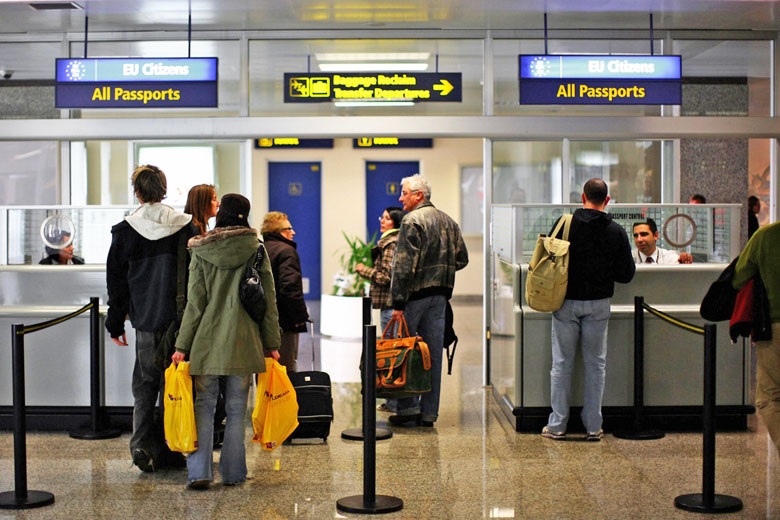For non-Europeans, crossing the border into the bloc is about to get progressively more complicated next year.
A new system called EES (entry-exit system) goes into effect from May 2023 and will change the current process in two main ways:
- In addition to the information in passports, the system will collect biometric data (fingerprints and facial images) and store them for future reference – just as the US currently does.
- Instead of passport stamps – which can be time-consuming as dates need to be manually verified – the system will automatically and accurately record when someone has entered the country to immediately know if they have overstayed.

Nothing will change for European Union citizens or people traveling within the Schengen area. It will only affect people arriving from outside that area.
The Schengen zone currently consists of 22 EU countries, plus Iceland, Liechtenstein, Norway, and Switzerland.
Most travelers can stay 90 days without a visa over 180 days. The new entry rule also applies to people with a second residence in France.
The procedures are mostly automated for people crossing borders by plane or train, and there is unlikely that there will be a big difference. However, it is unclear how travelers arriving by car would be affected.
Today, cars pre-register all people traveling in it, such as at the Eurotunnel border between France and the UK, and then hand their passports together for stamping.
It is unclear whether everyone will be required to get out of the car to have their fingers and faces scanned under the new rules.
People with dual nationality can travel on their EU passports and be exempt. People residing in an EU country can show their residence cards to prevent the system from starting a 90-day countdown after entering the country.
It has not yet been confirmed how EES would work with these people using the automated barriers, as it would not be known whether a visa or residence card exists.
EES is a different and additional new feature of European travel to the Etias (European Travel Information and Authorization System) scheme, which will be introduced at the end of 2023.
Etias will force visitors from outside Europe to apply for a visa waiver before arriving in a country in the area.
The Etias will work like the ESTA scheme in the US, costing €7 per registration and lasting three years.
Anyone coming from one of more than 63 countries will need it, including travelers from Brazil, Argentina, Australia, Canada, Japan, New Zealand, the USA, the UK, and the UAE.
It includes travelers between 18 and 70, and if someone’s passport expires within three years, they will need to apply for a new Etias visa waiver document.
The introduction of Etias has been delayed until November 2023.
With information from Forbes

